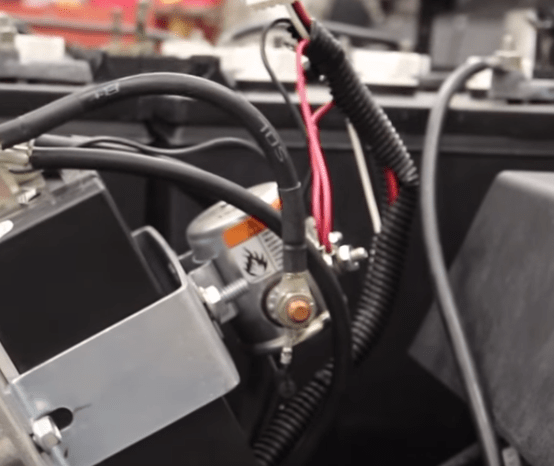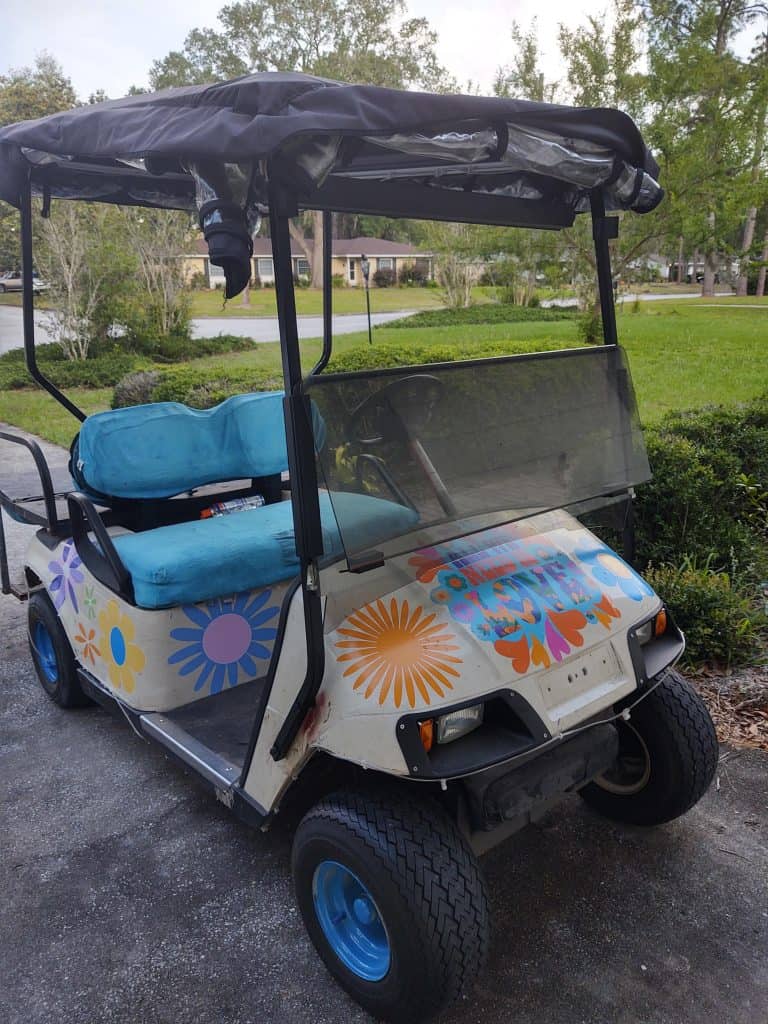Your Golf Cart Solenoid: What is it and What it Does
One of the most important components of your golf cart is the solenoid. It is one of the main components of your golf cart that allows it to move. Whether you have a Yamaha, E-Z-GO, or Club Car golf cart, and no matter if it is an electric or gas golf cart, you need a properly operating solenoid to get anywhere.
[amazon box=”B07GNCT1N4″]
What is a solenoid?
Good question! A solenoid, for our purposes, is a type of relay. A relay is a type of switch that uses a low power circuit to operate a high power circuit. A solenoid uses a magnetic coil (the actual solenoid) on a low power circuit to push a rod that closes a high power circuit.
On your golf cart, this high powered circuit is either your ignition on a gas golf cart or your electrical motor power circuit for an electric golf cart.
Basically it’s your golf cart’s go switch, and it’s absolutely essential to your golf cart’s ability to do its job. Golf cart solenoids are also typically one of the first components to fail in your golf cart, because they work very hard, turning on and off every time you stop and go in your golf cart.
If you have an issue with no start or no go then your solenoid should be pretty high on your list of things to check.


of Callaway ERC Triple
Track Golf Balls for
yourself or your buddy!
What does my solenoid do exactly?
Now that you know what it is and what it’s used for, let’s talk about the specifics of your golf cart solenoid. So when you press your accelerator down in your electric golf cart, your golf cart goes, right?
This happens because you’re inputting a signal with the accelerator that turns on your solenoid and speed controller. For the purpose of this, we’re mostly gonna talk about the solenoid.
So you push the pedal down, and your inductive throttle sensor makes its first signal. This will activate the speed controller and solenoid. The way this works is a relatively low powered circuit is made with the low side of the solenoid.
This activates the steel rod in your solenoid, creating a circuit between the motor and the speed controlling systems on your golf cart. Once you release the pedal, the solenoid clicks off after a predetermined amount of time, saving your battery life.
A gas golf cart solenoid works in a relatively similar fashion. Except instead of an inductive throttle sensor, you have a micro switch that turns on when you press your gas pedal.
This switch is what sends the low power to the solenoid. The solenoid uses this to create a circuit between the battery and the starter, thus starting your motor and getting you grooving.
Where is my solenoid?
Now that we have an idea of the solenoid’s job, it’ll be a lot easier to diagnose the solenoid in the case of no start or no go. Of course, before you get your tester out, it may be a good idea to know where the solenoid is and what it looks like.
Most golf cart solenoids will be found under the seat with four wires connected to it. It should look like this.

and apparel.
gear, accessories and apparel. (affiliate link)
Testing your golf cart solenoid
So now that you found your solenoid, it’s time to find out if it needs replacement. The first step will be disconnecting the high side wires. These will be the larger wires connected to the larger terminals.
Pretty intuitive, right?
You may need two wrenches for this step, depending on the type of securing method your solenoid uses.
The purpose of this step is to disable your golf cart’s mobility. You don’t want your golf cart to suddenly start moving on you and cause injury or property damage, right? Also remember to remove the key, if equipped. ?
Now that you have the solenoid disconnected from the high voltage side, turn your cart on and press your pedal down. You should hear a click. If you do, then at least the low side voltage is working. If you don’t then you aren’t getting low side voltage, or the solenoid is bad.
From this point there are two ways to continue, a safe way with a voltmeter, and a fun way without a voltmeter.
If you have a voltmeter, then it is really in your best interest to use it. If you heard a click when you engaged the solenoid, check for continuity between the two high side terminals on the solenoid.
This is done by setting your multimeter to read ohms and applying the leads to the two terminals. If it reads infinity or open lead, then the solenoid has an internal fault and requires replacement.
Your solenoid should also have a range that it operates in, and if the resistance reads outside of that range, you should replace the solenoid even if it works to avoid damaging other components. If the resistance reads within the proper range, then your solenoid is good.
If you didn’t hear a click in the first step, then check for power making it to the solenoid. Set your multimeter to volts, attach your leads to the small terminals, and activate the solenoid circuit.
You should read the battery pack voltage. If you do read pack voltage, but there is no click, the solenoid is bad. If you don’t read pack voltage, then the problem lies elsewhere.
The other, more fun way to test your golf cart solenoid is certainly not as safe or good for your golf cart. It mainly involves bypassing, or jumping, your solenoid.
How to Bypass Solenoid on Golf Cart
Not everybody has a multimeter or the money to drop on one. They can be a little expensive for a good one, so maybe you just want a quick, dirty way to check if the golf cart works in general and it’s just the solenoid holding you back.
Before you get into this, you have to be aware that this is not an exact science. Just because you jumped your solenoid and everything worked, doesn’t necessarily mean the solenoid is the actual problem. You’ll have to jump a couple things to finally isolate the solenoid as the root problem.
Jumping the solenoid is pretty easy, though. Remember those two larger wires we disconnected from the solenoid? You’re gonna connect these two together, and attempt to operate your cart.
It should work, but if it does it doesn’t immediately mean the solenoid is the root cause. If it doesn’t work though, you can rest assured that the solenoid isn’t your problem.
Before you run out and get a solenoid, you’ll have to test the entire ignition system this way to find out what’s not working, and it is a bit of a pain.
Your best bet is to jump it like this to drive it onto your trailer, into a shop, or to the tool store to buy a multimeter. If your set on this course though, I hope you had checked the key switch and micro switch if you have a gas golf cart.
If you have an electric cart, you should stop at key switch and solenoid if you’re just jumping components. Everything else is touchy, dangerous to bypass, and easy to damage if you don’t do it right.
With an electric golf cart, a multimeter is a must have for self maintenance, so I would just bite the bullet and go buy one if you plan on being your own mechanic.







